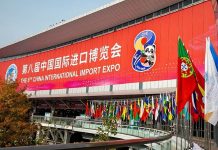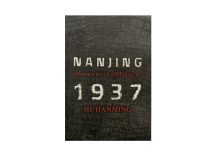From Gao Jiawei
The world is in the midst of its worst economic slowdown in three decades. According to the World Bank, global growth stagnated at an estimated 2.7% last year and is expected to remain at the same level in 2025. That’s a full 0.4 percentage points below the average of the decade before the pandemic—hardly a sign of recovery.
However, this is not the end of the story. The global economy can turn around, but only if the fundamental drivers of growth are restored—and that starts with global trade.
As the world’s two largest economies, China and the United States bear a unique responsibility to lead these efforts. China has embraced a development-first strategy and is tackling global challenges with increased openness and collaboration.
But the U.S. seems to be doing the opposite. Instead of fostering collaboration, the U.S. has chosen to weaponize tariffs and escalate its decoupling from the rest of the world. One of the clearest examples of this can be found in AI development, where the U.S. has made it a point to take an isolationist stance that could have severe consequences.
Moving beyond sanctions: healthy China-U.S. competition fuels development
On January 13th, the U.S. dropped a new round of AI chip export restrictions, breaking the world into three tiers and labeling over 200 countries and regions as either partners and allies or rivals. The objective is to consolidate AI development within the so-called “safe” zones and deny advanced chips to those deemed adversaries, all while setting U.S. standards for the global AI race.
This round of sanctions has been heavily directed at China—now placed in the third tier, with a complete ban on importing American AI chips and “closed” AI models whose underlying architectures are not released to the public.
But the real question is: Is this move that’s aimed at shutting down China ultimately harming the U.S. itself?
U.S. semiconductor giants have already voiced their concerns, urging the government to halt the sanctions. Nvidia, for example, protested that the White House has effectively banned technology used in mainstream consumer products like gaming computers.
Even more concerning for American businesses is that China possesses vast application scenarios that the U.S. lacks, which are crucial for training and enhancing AI performance. By isolating itself, isn’t the U.S. pushing the world to choose China instead? As Oracle has stated, this move by the U.S. is effectively handing “most of the global AI and GPU market to our Chinese competitors.”
The fallout from these sanctions is already clear. American businesses are furious, and the foundation of U.S. technological supremacy is crumbling. Since the U.S. initiated its trade war with China in 2018, the landscape has shifted dramatically. By 2019, China had already surpassed the U.S. in the number of internationally granted patents, signaling the rise of its innovation ecosystem. China’s chip exports, valued at 78 billion US dollars in 2018, is expected to exceed 150 billion—achieving a remarkable doubling despite the roadblocks.
This growth tells us something critical: the sanctions are not working as intended. In fact, they may be pushing China to innovate faster and become more independent than ever before. Even U.S. Secretary of Commerce Gina Raimondo has acknowledged this reality, calling the effort to block China’s technological progress “a fool’s errand.”
The sense of crisis is a crucial driving force for progress, and this is a view shared by both Chinese and American businesses. What the U.S. needs to realize is that healthy, organized competition benefits everyone. By isolating itself and pushing the world to pick sides, the U.S. risks squandering its leadership in the high-tech industry. The global AI race shouldn’t be about forcing others to fall in line with American ideals—it should be about unlocking the full potential of global innovation. Only then will the world, and the U.S., truly reap the rewards.
Global AI development: the potential for China-U.S. cooperation
The development of high-tech industries between China and the U.S. should not be viewed as a zero-sum game. Instead, it offers a wealth of opportunities for collaboration that could benefit both nations and the world at large.
For example, China’s startup DeepSeek recently introduced its large language model, DeepSeek-V3. Despite the chip bans, the model has earned international acclaim for its exceptional technical performance and impressively low training cost—just one-twentieth of those associated with GPT-4o. Just days before this release, OpenAI’s CEO, Sam Altman, made an intriguing statement in an interview: the U.S. and China must avoid an AI arms race and seek cooperation wherever possible. While it may seem ironic coming from OpenAI—an organization that enforces strict IP bans on the Chinese mainland—Altman’s words signal a growing realization within the U.S. tech community that collaboration with China is not only necessary but beneficial.
This sentiment is echoed in the actions of U.S. companies. Apple’s CEO, Tim Cook, made headlines with his appearance at China International Supply Chain Expo last year, where he reaffirmed Apple’s long-term commitment to the Chinese market. Cook’s words are a clear signal that U.S. companies recognize the value of engaging in mutually beneficial partnerships with China—despite the political and trade tensions that continue to simmer.
Even in the face of those tensions, China and the U.S. have kept dialogue in AI governance under the United Nations framework. In March, the U.S. proposed an AI technology resolution, co-signed by China. In July, China put forward a resolution on international AI cooperation, with the U.S. as a signatory. By December, China had initiated an AI capacity-building cooperation group, with 80 countries—including the U.S.—participating.
These collaborative steps point to a shared recognition that the future of AI hinges on international cooperation, not isolation. An AI arms race will ultimately benefit no one. History has proven this time and again. Genuine cooperation, when possible, is the way forward.
With Donald Trump’s return, the world is bracing for four more years of uncertainty, volatility, and, no doubt, unpredictability.
Yet amid this tumult, one thing remains steadfast—China’s belief that the core of the China-U.S. trade relationship lies in mutual benefit and win-win cooperation, not endless confrontation and conflict. In this era of hyperconnected economies, where technology drives everything from national security to economic power, an open and collaborative approach to technology is a necessity.
It’s time for the U.S. to put aside its isolationist impulses and recognize the stakes. Innovation cannot—and should not—be stifled by egos or outdated ideologies. The clock is ticking. Let’s hope the Trump administration understands this before it’s too late.
–Gao Jiawei, a reporter and commentator with CGTN Radio based in Beijing, focusing on international trade and China’s economy.




